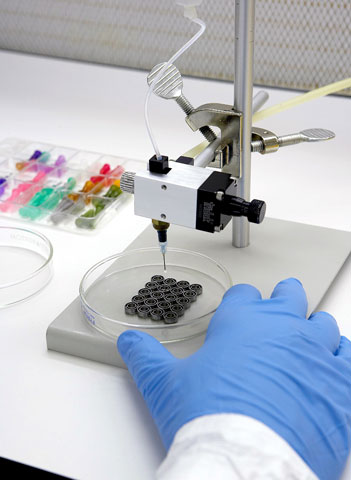Catch up on the previous installments here:

Welcome to the final entry into our comprehensive look at bearing design considerations for encoders! Bearing lubricant selection (and amount) is critical in optical encoders. Optical encoders rely on optoelectronic components to detect rotary motion. Lubricant migration and/or out gassing can contaminate these adjacent components and render the encoder useless.
To prevent migration of lubricants, fill amounts should not exceed 30% of the free space in the bearing. In addition, NLGI grade 2, or stiffer, grease should be used. In most cases, typical electric motor grease with a synthetic base oil and a poly urea thickener perform well. These greases have a temperature service range of around -40°F to 350°F.
For encoder spindles, low noise, high purity grease should be selected. In environments where there are more extreme temperatures, or hard vacuum where out gassing can occur, PFPE base oil greases are available. These greases also have special thickeners and additives that result in a tacky consistency that increases torque and often noise as well.
Bearings are key components in encoders, and as we have seen, can play a significant role in their overall performance and life of the instruments. Engineers, designers and bearing users are encouraged to consult a bearing applications specialist for assistance with calculating loads, shock, vibration, accuracy requirements and environmental conditions.
We hope that you’ve found this series educational! If you would like assistance or further information on bearing choices for encoders (or any other application), our bearing experts and engineers are ready to help, contact them here.

